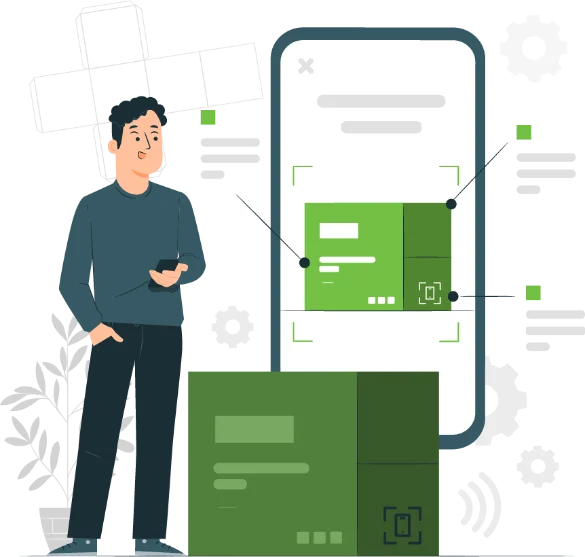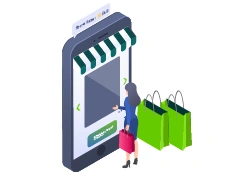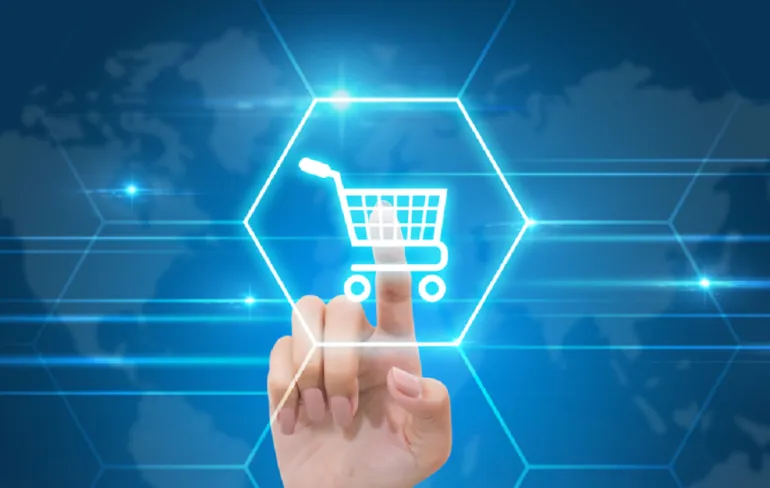The Future of Retail: Key Digital Trends Shaping the Industry
The digital revolution has transformed every facet of human life, and the retail industry stands at the heart of this change. From the way customers discover products to how they make purchases and engage with brands — technology now drives every step of the retail experience.
Gone are the days when retail operations relied solely on physical stores, manual billing, or basic customer interactions. Today, the retail ecosystem is powered by data, analytics, automation, and immersive technology. The modern customer expects convenience, personalization, and immediacy — and only retailers who embrace digital transformation can meet these expectations effectively.
In this dynamic and competitive environment, retailers who leverage the latest digital tools not only improve efficiency but also unlock new opportunities for growth, differentiation, and customer loyalty. In fact, the future of retail is entirely dependent on how seamlessly businesses adopt and adapt to emerging technologies.
In this article, we will explore some of the most revolutionary digital trends shaping the retail industry. These innovations are redefining how retailers operate, engage with customers, and sustain long-term growth.
1. Augmented Reality (AR): Transforming the Shopping Experience
Bridging the Gap Between Digital and Physical Retail
One of the most exciting innovations in modern retail is Augmented Reality (AR). This technology blends digital information — such as 3D visuals, virtual overlays, and interactive interfaces — into the physical world. For retailers, AR has opened new possibilities in both online and in-store experiences.
With AR-powered virtual studios, smart mirrors, and 3D product visualization tools, customers can now “try before they buy,” all from the comfort of their homes or within interactive store environments.
Examples of AR in Retail
- Virtual Try-Ons: Fashion and eyewear brands like Ray-Ban, Warby Parker, and Zara use AR-enabled apps that allow customers to virtually try on sunglasses, apparel, or accessories before purchasing.
- Furniture Visualization: Home furnishing brands such as IKEA and Wayfair use AR to let customers visualize how a sofa or table would look in their living rooms using smartphone cameras.
- In-Store Magic Mirrors: Retailers are using AR mirrors that help customers see different outfit combinations, color options, or sizes instantly — without physically changing clothes.
Benefits for Retailers and Customers
- Enhanced Customer Experience: Shoppers can make confident purchase decisions without doubts about fit, color, or aesthetics.
- Reduced Return Rates: When customers know exactly what they’re buying, return and exchange rates drop significantly.
- Stronger Brand Differentiation: AR offers a “wow” factor that enhances brand perception and customer engagement.
- Data Insights: AR tools collect behavioral data — such as what customers try, skip, or buy — enabling retailers to fine-tune marketing strategies.
The Future of AR in Retail
As AR continues to evolve, we can expect it to integrate with AI (Artificial Intelligence) and machine learning to deliver hyper-personalized experiences. Imagine an AR mirror that not only shows how a jacket fits but also recommends accessories based on your purchase history and current trends.
The retailers that invest early in AR technologies will have a competitive advantage, attracting tech-savvy consumers and creating immersive experiences that blur the line between online and offline retail.
Explore how leading retailers use Ginesys One to deliver immersive, tech-driven customer experiences.
2. Retail Tech Solutions: The Digital Backbone of Modern Retail
From Legacy Systems to Smart Retail Platforms
Technology is no longer just a support tool for retail — it’s the foundation. Retailers today rely on robust, end-to-end retail management systems (RMS) or Enterprise Resource Planning (ERP) solutions to manage their complex operations seamlessly.
While retail tech software solutions have existed for years, many businesses still haven’t realized the full potential of integrating all their processes into a single, cohesive digital ecosystem. An ideal ERP or RMS doesn’t just automate basic tasks — it brings together data from across the business to enable strategic decision-making, operational efficiency, and personalized customer engagement.
Comprehensive Retail Management Systems: A Must-Have
An integrated system like Ginesys helps manage every core function of retail, such as:
- Procurement and Production: Automating purchase orders, vendor management, and inventory replenishment.
- Inventory Management: Tracking stock movement, warehouse capacity, and real-time updates across stores.
- Sales and Distribution: Streamlining order management, shipping, and delivery tracking.
- Finance and Accounting: Managing invoicing, taxation, reconciliation, and profitability analysis.
- Customer Loyalty and CRM: Building personalized relationships with customers through data-driven insights.
- Business Intelligence and Analytics: Empowering decision-makers with dashboards, KPIs, and predictive analytics.

Want real-time visibility across stores and warehouses? Learn how Ginesys powers unified inventory management for multi-store retailers.
The Power of Real-Time Data
One of the most impactful features of a modern retail ERP is real-time inventory synchronization. As soon as a sale occurs, the system automatically updates stock levels, helping retailers avoid overstocking or stockouts.
For example, if a customer purchases a handbag from your online store, the system immediately reflects the change in the inventory count across your physical stores, website, and warehouses. This prevents duplicate orders and ensures transparency across all channels.
Real-time data also enables retailers to identify fast-moving products, manage slow-moving stock, and plan reorder cycles with precision.
Data-Driven Decision Making
With advanced analytics, retailers can derive meaningful insights such as:
- Which product categories bring in the highest profit margins.
- Which locations or stores perform best.
- Which marketing campaigns deliver the best ROI.
- How customer purchasing patterns change seasonally.
These insights empower business owners to make smarter, faster, and more profitable decisions — backed by data, not guesswork.
Personalized Customer Experiences Through Technology
Modern retail systems also include customer loyalty modules that allow for tailored interactions. Retailers can track customer behavior, reward loyalty points, and send personalized offers — for example, birthday discounts or recommendations based on past purchases.
When integrated with marketing automation platforms, these loyalty programs transform into powerful retention tools. A well-implemented CRM system not only improves sales but also helps build emotional connections with customers.
Why Investing in Retail Tech Is Non-Negotiable
In today’s hyper-competitive market, retailers who delay digital adoption risk falling behind. With the right software solution, such as Ginesys, retailers can automate operations, enhance efficiency, and create unified customer experiences — all while scaling profitably.

Upgrade to an integrated retail management platform — discover how Ginesys ERP streamlines procurement, inventory, POS, and distribution.
Omnichannel Retailing: The Future of Seamless Commerce
The Shift Toward a Unified Retail Experience
Today’s customers move fluidly between digital and physical worlds. They may browse a product online, compare prices on mobile, visit a store to check the quality, and finally place the order through an app.
For such customers, convenience and consistency are key. They expect the same experience and access to products — whether shopping in-store, online, or on social media. This shift has made omnichannel retailing one of the most transformative trends in the industry.
Understanding Omnichannel Retail
Omnichannel retailing is not just about selling across multiple platforms; it’s about connecting all touchpoints — brick-and-mortar stores, websites, mobile apps, social media, call centers, and even third-party marketplaces — into a single, unified ecosystem.
The goal is to ensure that customers can start, pause, and resume their buying journey anywhere, anytime, without friction.
Examples of Omnichannel Excellence
- Click-and-Collect: Customers order online and pick up the product in-store.
- Buy Online, Return In-Store (BORIS): Customers can return or exchange online purchases at physical outlets.
- Endless Aisle: Sales associates can use tablets or POS systems to order out-of-stock products from other locations for customers.
- Social Commerce: Brands use Instagram, Facebook, and WhatsApp to enable direct purchases from social media platforms.
Benefits of Omnichannel Retail
- Consistent Customer Experience: Ensures seamless interaction across platforms, increasing satisfaction and trust.
- Better Inventory Utilization: Unified systems prevent overstocking or stockouts by balancing inventory across locations.
- Enhanced Data Collection: Each channel contributes to a single customer profile, helping personalize experiences further.
- Revenue Growth: By removing friction from the buying process, omnichannel retailers increase conversions and repeat business.

Transform your retail operations with Ginesys One, book a demo to see how India’s #1 retail software suite can accelerate your digital journey.
How Technology Powers Omnichannel Retail
A robust retail software solution like Ginesys plays a crucial role in enabling omnichannel operations. It synchronizes inventory, orders, and customer data across all platforms, ensuring that information is always accurate and up to date.
This integration empowers retailers to track every sale, manage returns, and maintain consistent pricing and promotions. It also ensures that loyalty points and gift cards are recognized universally — whether customers shop online or offline.
Omnichannel: The New Retail Normal
The COVID-19 pandemic accelerated digital adoption, making omnichannel the new standard for retail. Even as physical stores remain essential, they now function as experience hubs, pickup centers, and fulfillment nodes — complementing digital channels rather than competing with them.
Retailers who succeed in merging these worlds — with consistent branding, unified data, and seamless technology integration — will dominate the future of commerce.
The retail industry is evolving at lightning speed, driven by technological advancements that continue to redefine business operations and customer experiences.
From Augmented Reality enhancing visual engagement, to Retail Tech Solutions powering operations, and Omnichannel Retailing ensuring seamless shopping journeys — digital transformation is the backbone of modern retail success.
Retailers who embrace these innovations will not only survive but thrive in this digital-first era. Solutions like Ginesys are empowering brands to integrate, automate, and innovate — helping them stay ahead of the curve.
The future of retail is here, and it’s intelligent, connected, and customer-centric.
FAQs: Digital Trends in the Retail Industry
1. What are digital trends in retail?
Digital trends refer to the latest technologies and innovations — such as AR, AI, omnichannel retailing, and ERP systems — that help retailers improve efficiency and customer experience.
2. Why is digital transformation important for retailers?
Because it enhances productivity, improves decision-making, and ensures retailers remain competitive in an increasingly digital marketplace.
3. How does Augmented Reality benefit retail?
AR enhances customer engagement by offering interactive shopping experiences — like virtual try-ons or 3D product previews — leading to higher satisfaction and fewer returns.
4. What is an end-to-end retail management software?
It’s an integrated system (like Ginesys) that manages procurement, inventory, sales, finance, customer loyalty, and analytics in one platform.
5. How does real-time inventory management help retailers?
It provides instant visibility into stock levels, preventing overstocking or shortages and enabling faster, data-backed decision-making.
6. What is omnichannel retailing?
Omnichannel retailing connects all sales channels — physical stores, e-commerce, mobile, and social media — to deliver a consistent and seamless shopping experience.
7. How can retailers personalize customer experiences through technology?
By using CRM and loyalty modules integrated with POS data to send personalized offers, track preferences, and reward loyal customers.
8. Are digital retail technologies expensive to implement?
Not necessarily. Cloud-based retail solutions like Ginesys offer scalable pricing models suitable for small, medium, and large enterprises.
9. What future technologies will impact retail the most?
Artificial Intelligence, Machine Learning, Internet of Things (IoT), Blockchain, and advanced AR/VR applications are set to redefine retail operations.
10. How can a retailer get started with digital transformation?
Begin by evaluating business goals, identifying operational pain points, and adopting a trusted retail tech platform like Ginesys that supports automation, analytics, and omnichannel operations.

